
Animal
17:18, 15-Feb-2019
World Hippo Day: Learn about the world's 3rd largest mammal
Updated
17:39, 15-Feb-2019
By Ding Qian
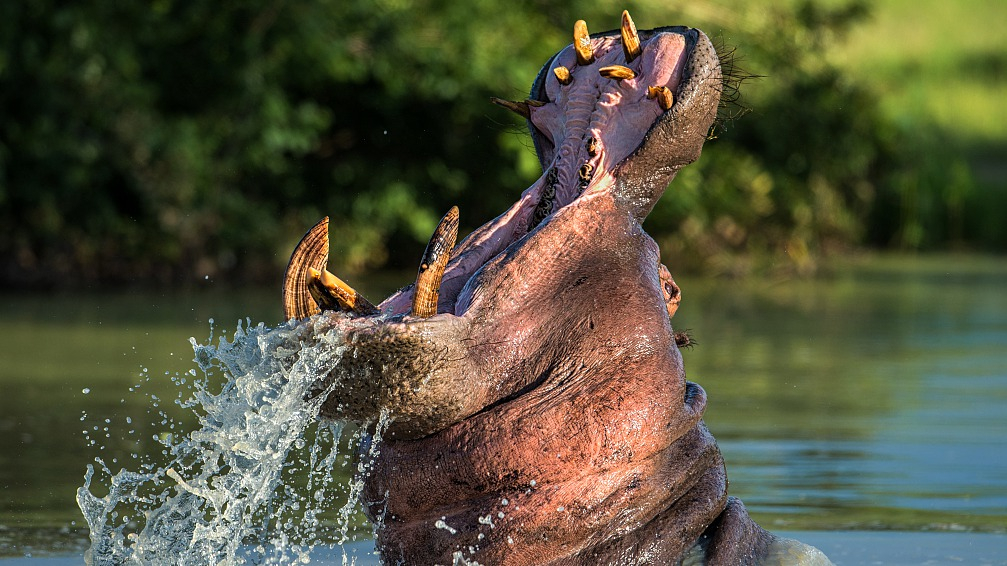
February 15 is World Hippo Day, an occasion to celebrate and appreciate the world's third largest mammal.
They're big, they're river dwellers, and they're adorably cute – but what else do you know about these great beasts? Here are some facts that will help you better understand the "river horses."
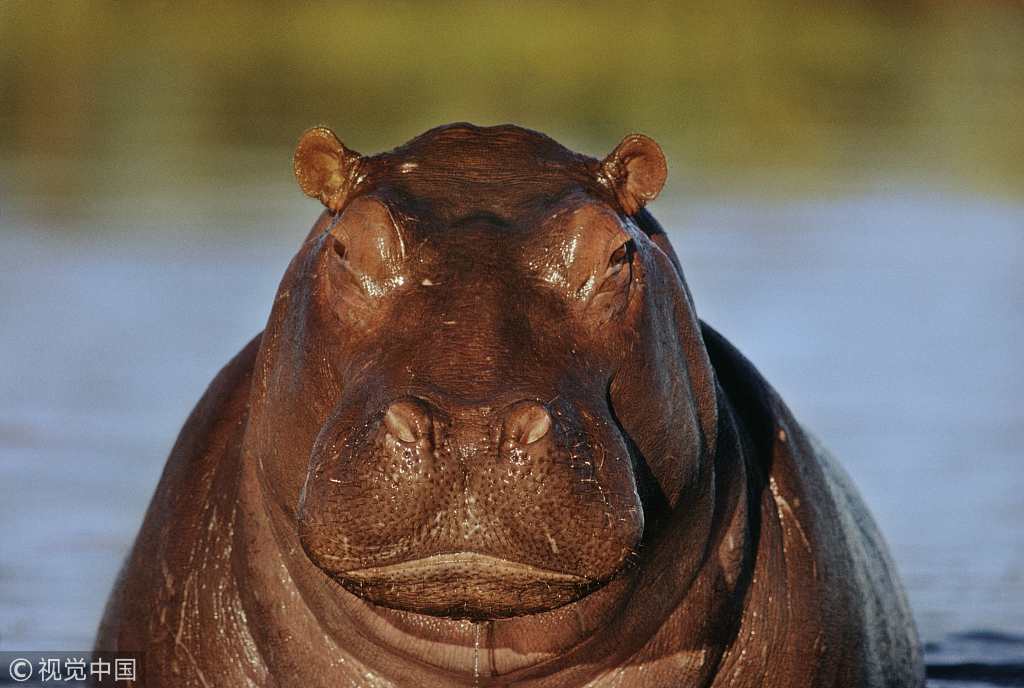
A close-up look of a hippo. /VCG Photo
A close-up look of a hippo. /VCG Photo
1. Hippos are semi-aquatic mammals native to sub-Saharan Africa. Although they resemble pigs to a certain degree, their closest living relatives are actually cetaceans such as dolphins and whales.
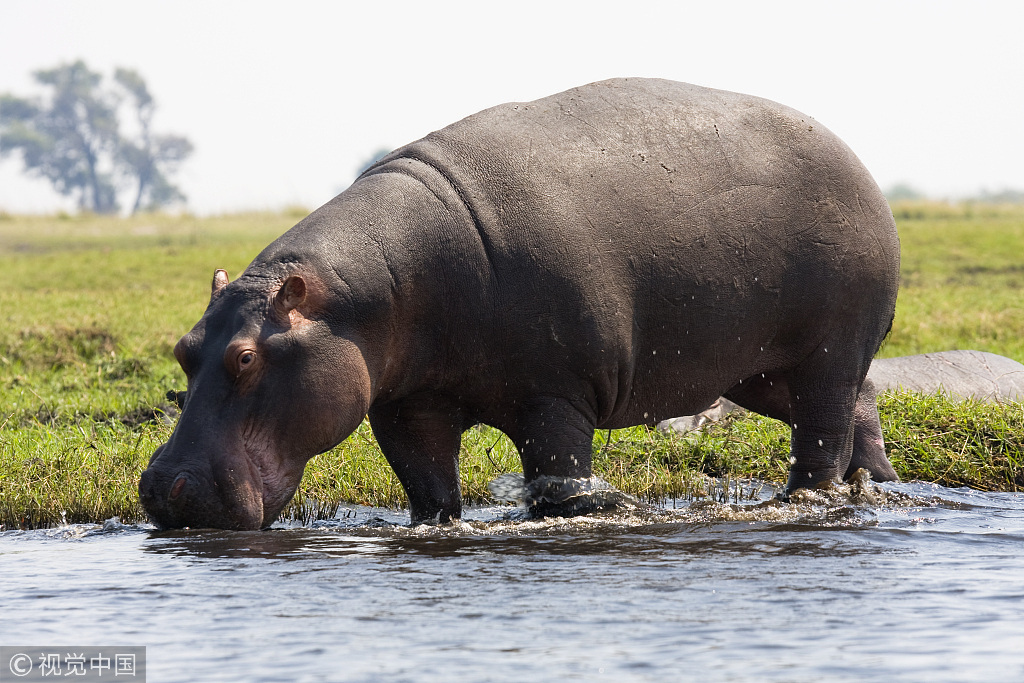
A hippopotamus wades in the water at the Chobe National Park in Botswana. /VCG Photo
A hippopotamus wades in the water at the Chobe National Park in Botswana. /VCG Photo
2. Hippos spend most of their daytime in lakes and rivers to keep cool. They also sweat an oily red liquid to protect themselves from being sun burned.
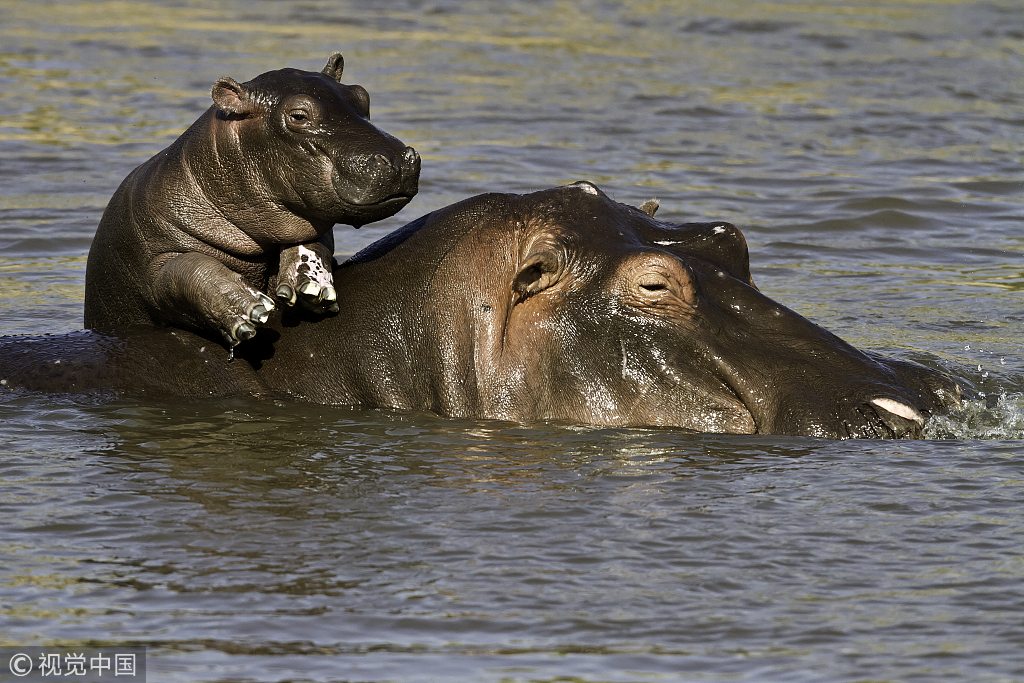
A baby hippo enjoys a free ride on its mother's back. /VCG Photo
A baby hippo enjoys a free ride on its mother's back. /VCG Photo
3. Hippos might look sturdy and slow, but they're one of the most dangerous animals in Africa.
Although they mainly eat plants, they are not pure herbivores. Many hippos have been observed eating wildebeest and buffaloes. So if you see a hippo repeatedly yawning, don't just assume it's sleepy. It might just be your cue to leave it alone.
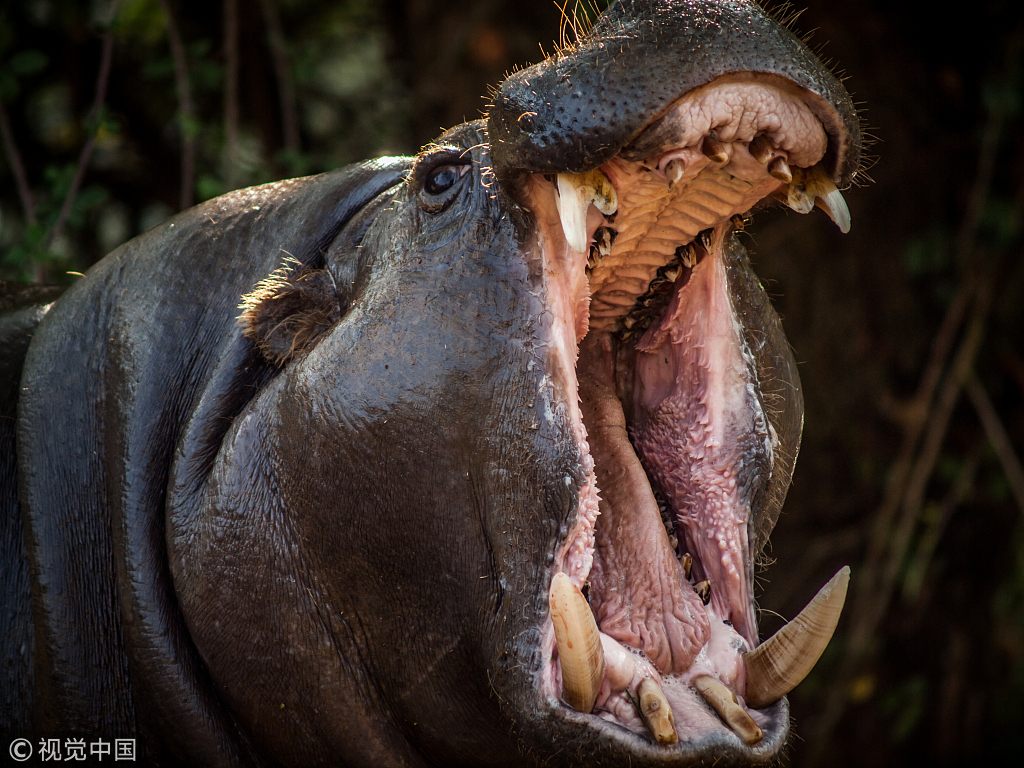
Hippos are cute, but they're also dangerous. /VCG Photo
Hippos are cute, but they're also dangerous. /VCG Photo
4. Hippos play an important role in ecology. All the mud stirring from roaming in the river and the dung they drop in the water are actually beneficial to the fish population.
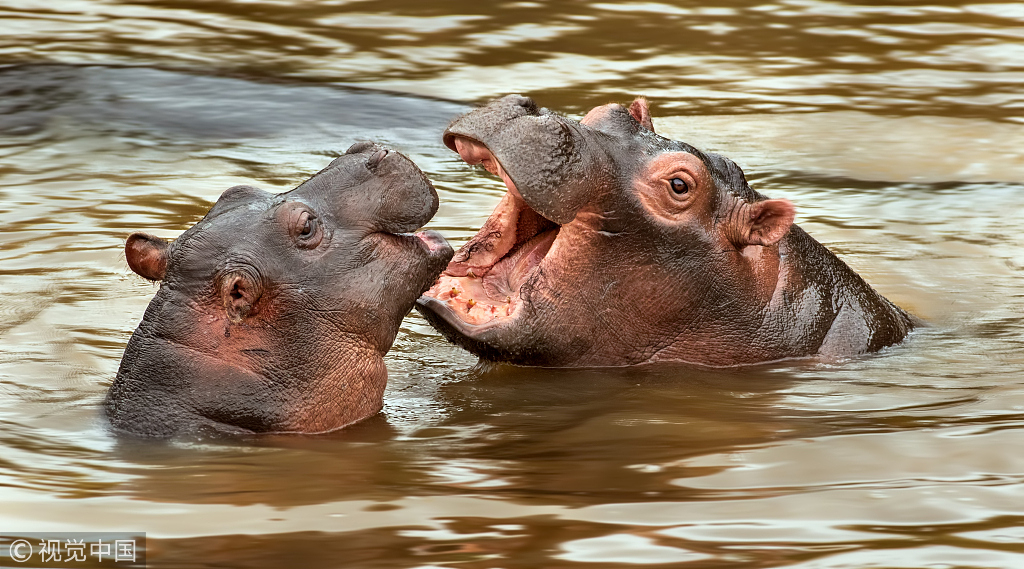
Two hippos enjoy their time in the water. /VCG Photo
Two hippos enjoy their time in the water. /VCG Photo
5. When hippos sleep underwater, they still resurface every three to five minutes to breathe without waking up.
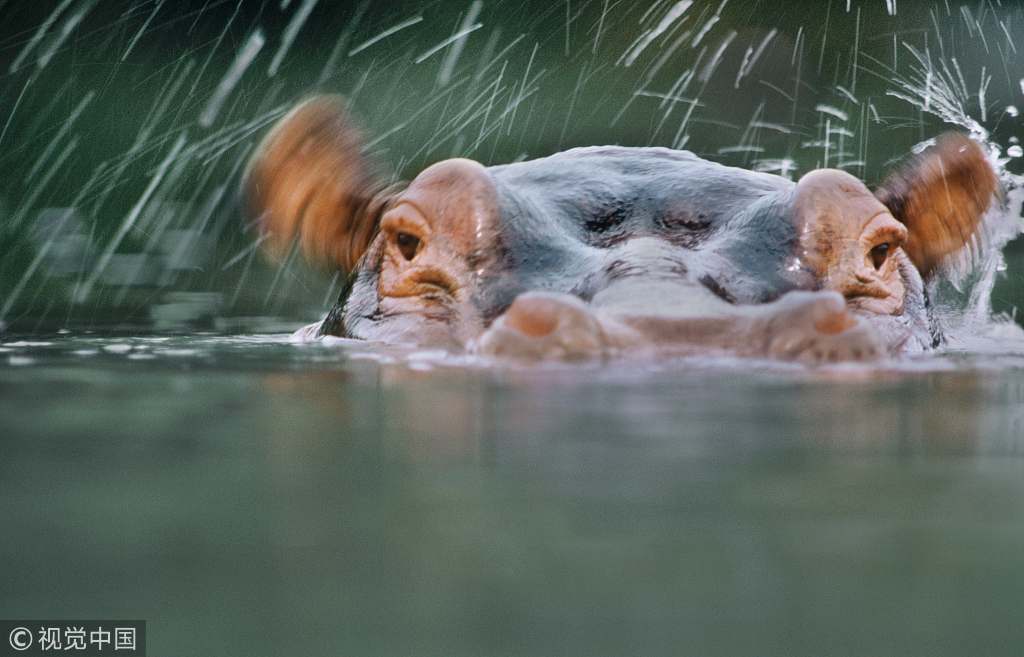
A hippo wiggles its ears. /VCG Photo
A hippo wiggles its ears. /VCG Photo
6. Hippos are territorial in water. They can be very aggressive when protecting their own area. They also mate and give birth in water.
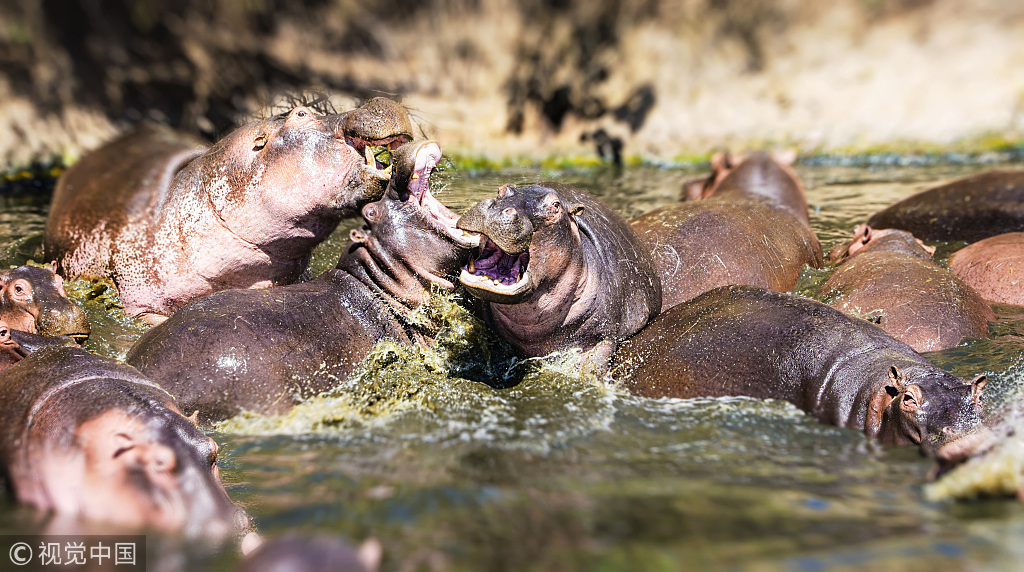
Hippopotamuses fight in a pond in Tanzania. /VCG Photo
Hippopotamuses fight in a pond in Tanzania. /VCG Photo
7. Although they spend hours in water, hippos can't really swim. Instead, they run along the river bottom.
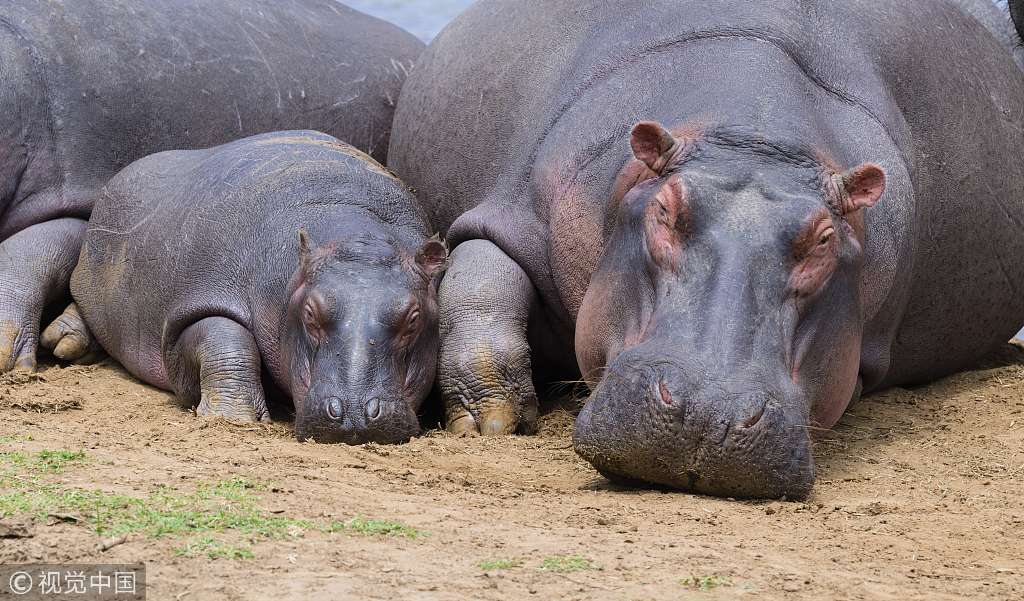
A mother hippo and its baby rest. /VCG Photo
A mother hippo and its baby rest. /VCG Photo
8. Although they are enormous, they are mostly herbivorous and can consume 68 kg of grass every night. But considering their huge size, this is not really a big amount of food.
These magnificent mammals used to live throughout sub-Saharan Africa, but because of illegal hunting for their skin and teeth, as well as human threats, their population is declining.
According to the International Union for the Conservation of Nature (IUCN), following the ban on the international trade of elephant ivory, the demand for hippo teeth as affordable alternatives escalated sharply.
Currently, the species is listed as "Vulnerable" by the IUCN.

SITEMAP
Copyright © 2018 CGTN. Beijing ICP prepared NO.16065310-3
Copyright © 2018 CGTN. Beijing ICP prepared NO.16065310-3